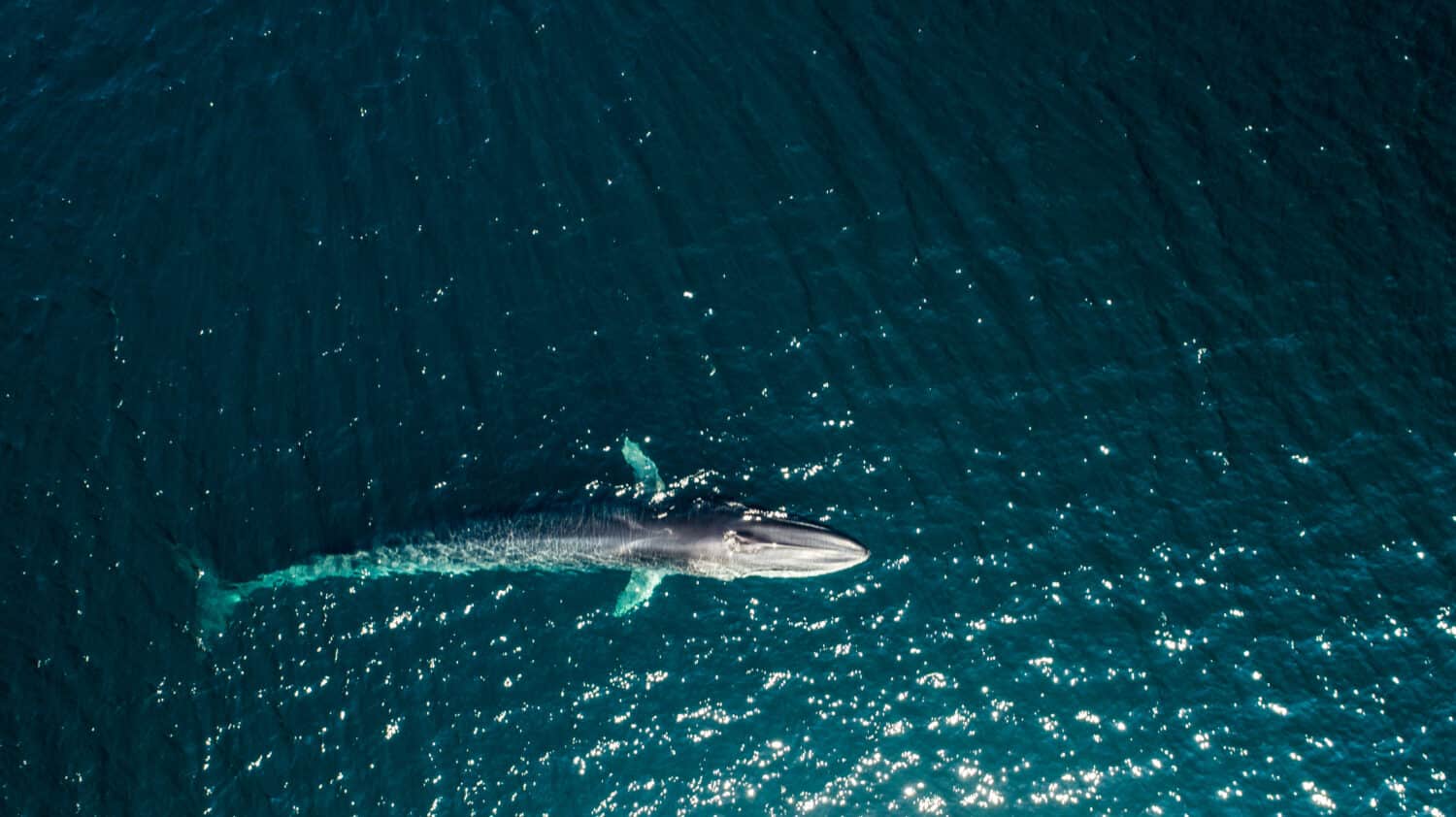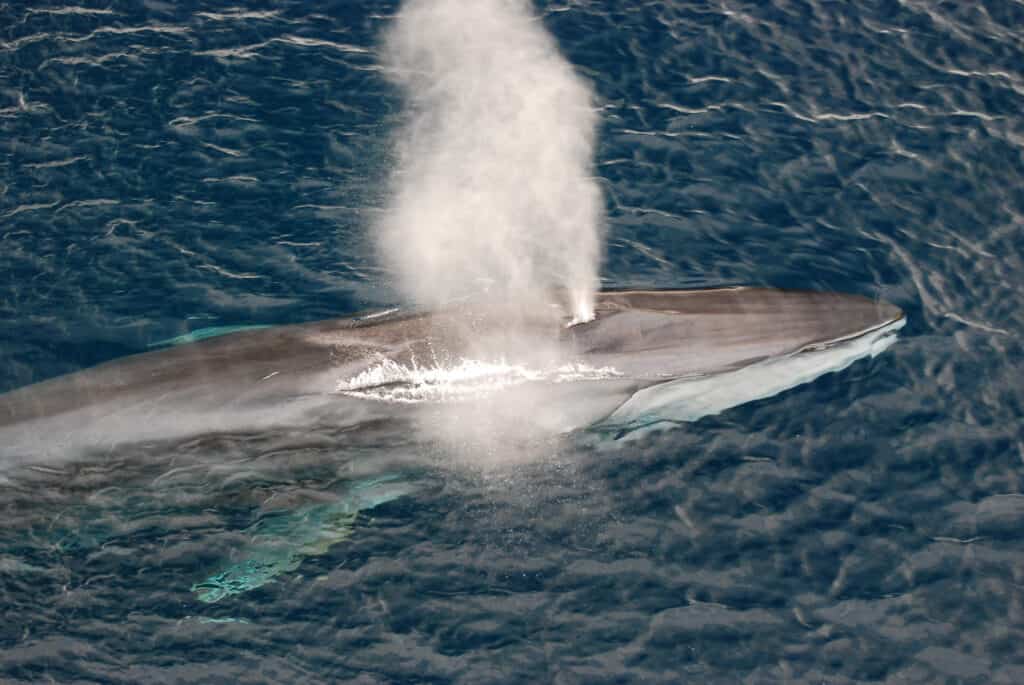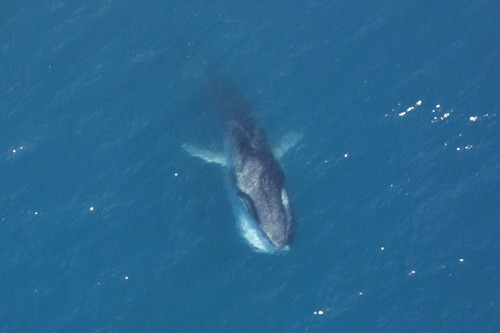Continue reading for our analysis...

The sight of this magnificent creature emerging from the depths is just amazing! The fin whale lifts its giant body just above the surface so that its blowhole can eject and take in air. Keep scrolling to see the full clip of this mesmerizing sight.
Watch the Mesmerizing Footage Below
What Is the Largest Creature on Earth?

Blue whales are the biggest animals to ever have lived on our planet.
©Andrew Sutton/Shutterstock.com
The accolade of the largest creature on Earth goes to the blue whale (Balaenoptera musculus). These are the biggest animals to ever have lived on our planet.
They can grow up to a massive 330,000 pounds in weight and reach 110 feet in length. Their lifespan is between 80 and 90 years and the main threats to their survival are entanglement in fishing gear and strikes by ships and boats. They are in oceans all over the world except for the Arctic Ocean and there are currently five subspecies.
Why Is This Called a Fin Whale?
This amazing creature is called a fin whale. It is the second largest whale on earth. They are found in oceans all over the world. It’s not hard to spot the fin on its back from which it gets its name. This is the dorsal fin which is both tall and hooked and is located two-thirds of the way down the whale’s back.
Their bodies are sleek and streamlined and they have a V-shaped head. In terms of coloration, they are black or darkish brown/gray on their back and sides but their underbelly is white. Some of them have light grey ‘V’ shape markings behind their heads. Because these markings are unique, they can be used to identify an individual whale. These guys weigh between 40 and 80 tons (160,000 pounds) and can grow to as long as 85 feet. Their lifespan is between 80 and 90 years.

Fin whales can grow to 80 tons.
©iStock.com/JG1153
These gentle giants are called baleen whales. They feed on tiny creatures called krill as well as small fish (such as herring) and squid. The whales feed by lunging at groups of prey with their mouth wide open and taking in huge volumes of water. They then expel the water past their baleen plates which filter out the prey so that they can be eaten. These guys need up to two tons of food daily to keep them healthy!
Is It Normal For Fin Whales to Live Deep in the Ocean?

Fin Whales are found in oceans all over the world.
Fin whales are generally found in all of the major oceans, typically in the deep, offshore waters that occur in mostly temperate to polar areas with the exception of parts of the Arctic that remain covered in ice. They are not very common in tropical or warmer locations. They can be found at depths of 200 meters (or 650 feet).
As a mammal, the fin whale needs air to breathe and will surface in order to intake air through its nostrils, or blowhole. Larger whales, like the fin whale, generally surface every 10 to 15 minutes for air. As they approach the water’s surface, they are expelling air through their blowhole which erupts almost 20 feet into the air.
How Large Are Fin Whales?

The largest fin whale ever weighed was a 74 ft pregnant female that weighed 69.5 tons.
©iStock.com/JG1153
Fin whales are the second-largest whale species in the world. The average size of an adult male is 70 feet long with a weight of 45 tons, while adult females average 73 feet and a weight of 45 tons. As babies, these large whales can weigh up to 3600 lbs and have lengths of up to 21 ft. The largest fin whale ever weighed was a 74 ft pregnant female that weighed 69.5 tons.
Thank you for reading! Have some feedback for us? Contact the AZ Animals editorial team.







